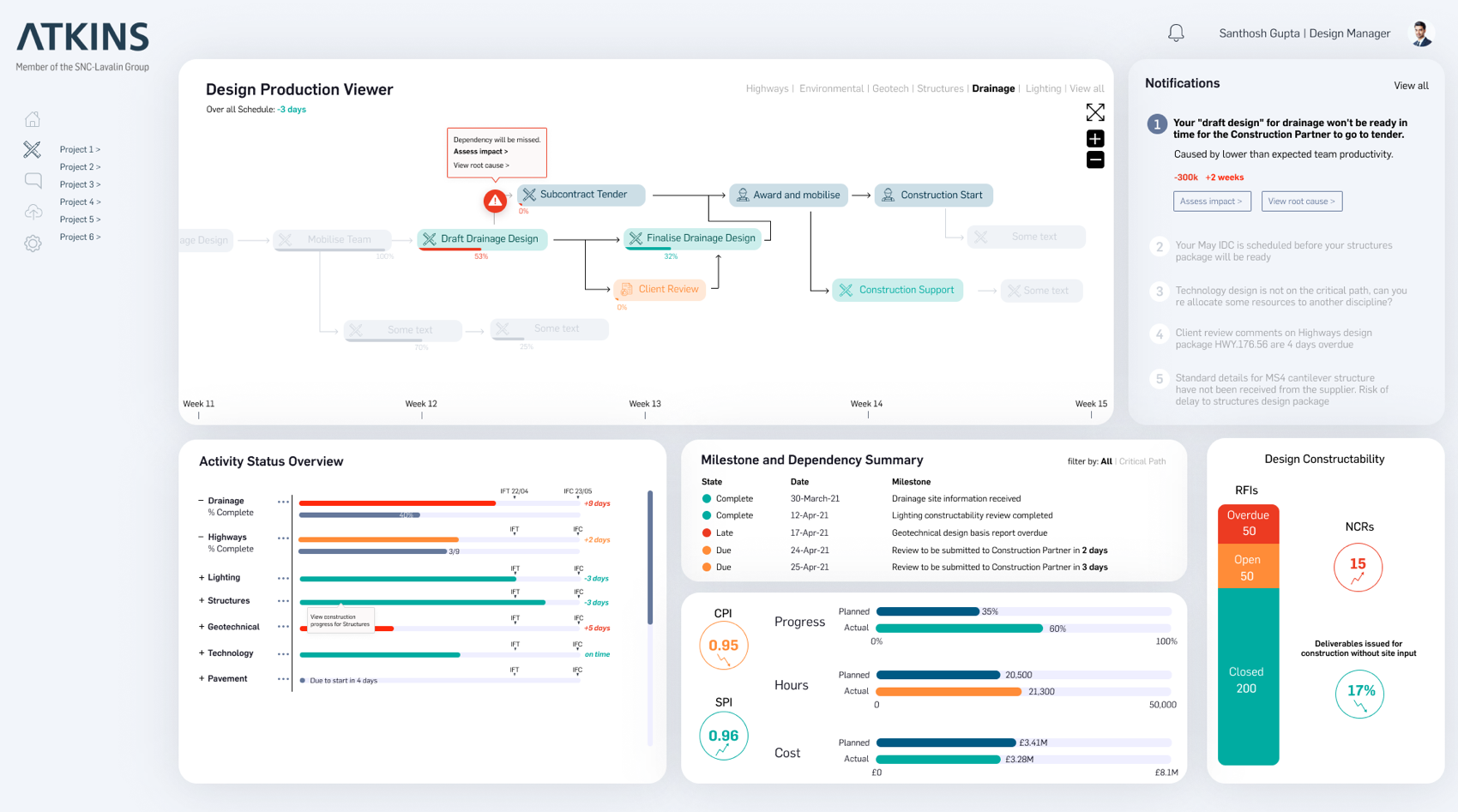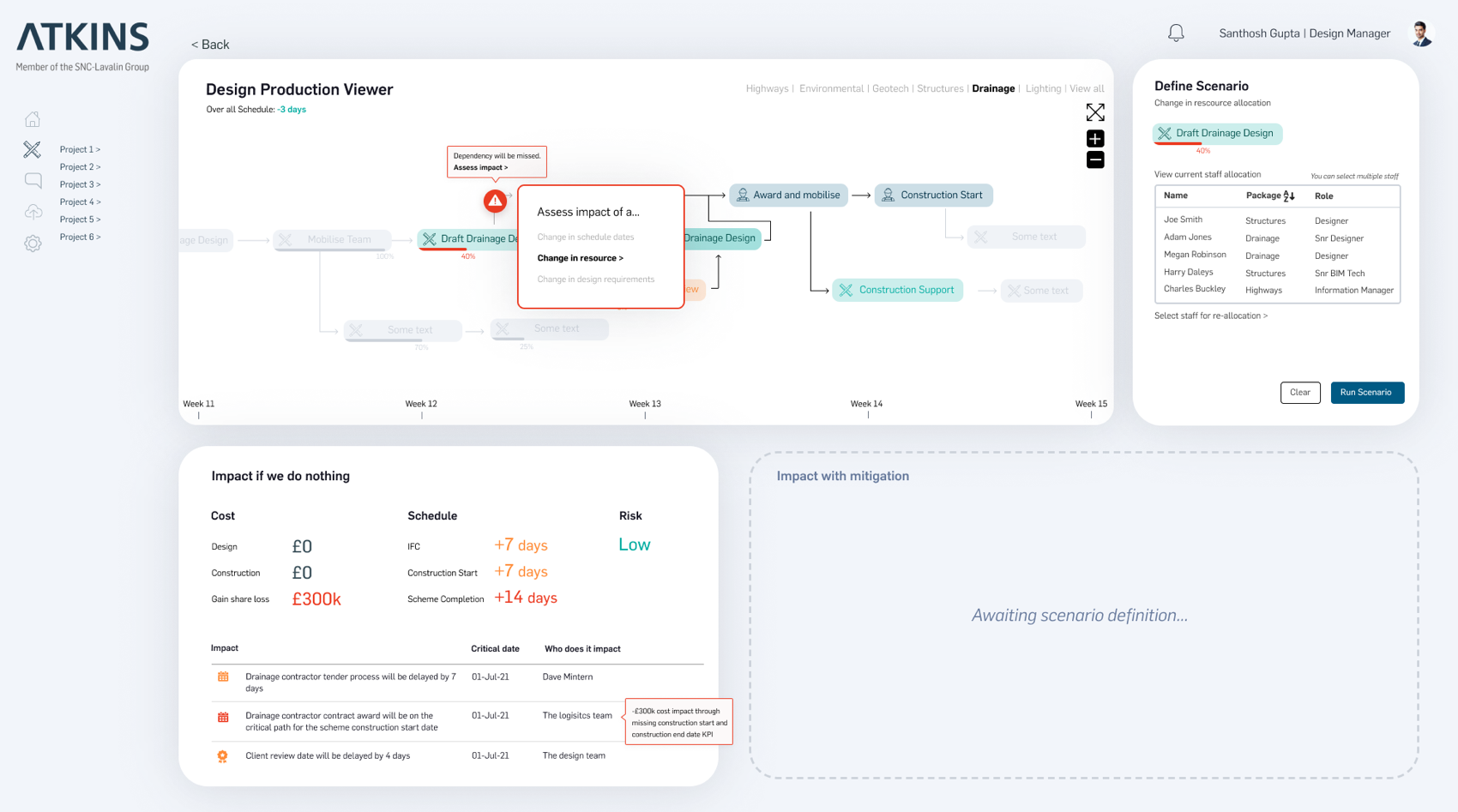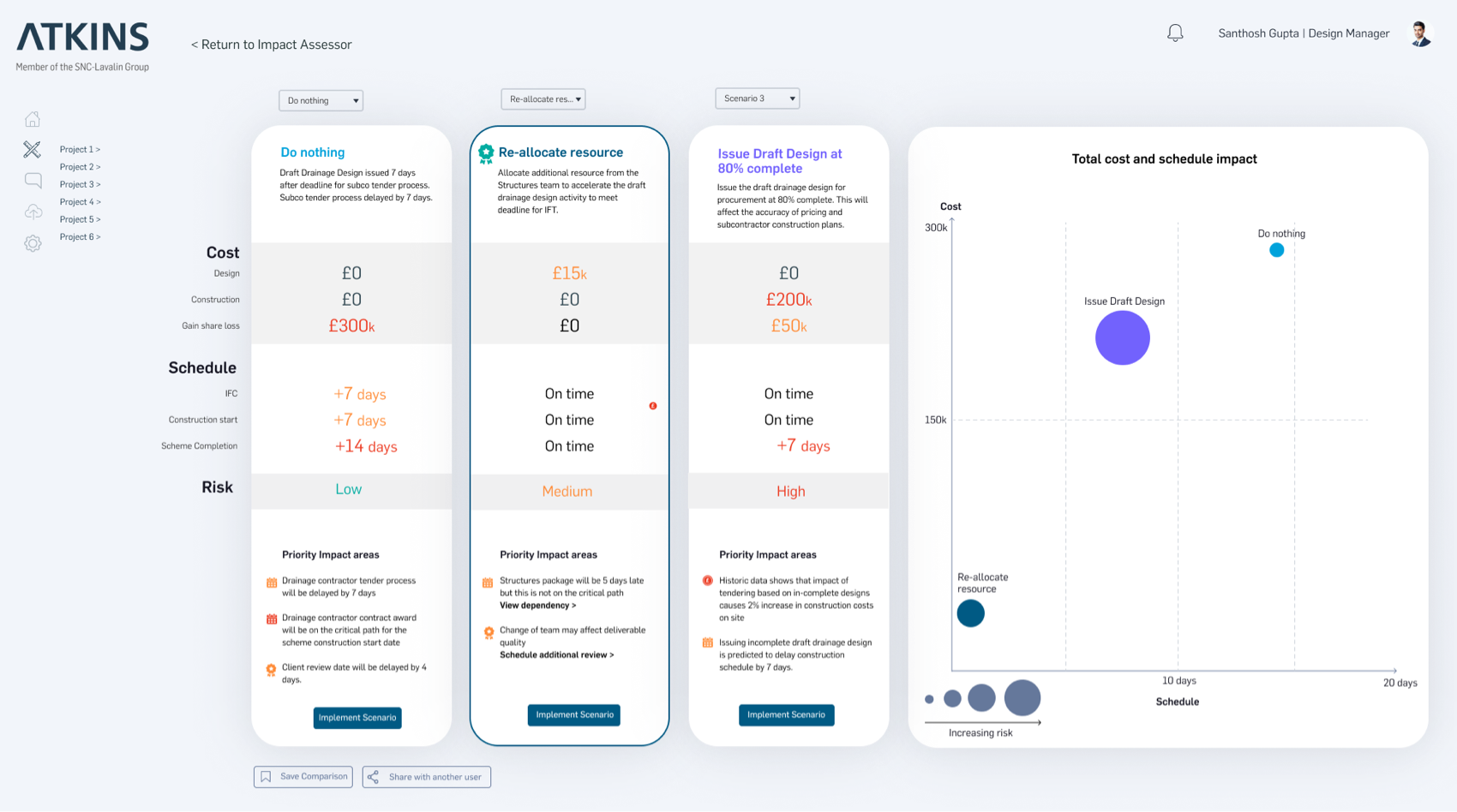

Digitising ATKINS
Atkins is a multinational engineering, design, planning, architectural design, project management and consulting services company.
As part of their digitising process they are looking to implement an central solution to the design, planning and construction of roads where construction managers can log in and plan/forecast any future engineering works.
The proposed solution should be a hands on prototype, for upper management to get a feel of the UX and possible User Journeys for each of the various types of users.
Prototype Project
5 months
Research, Interviews, UX
Web Application
Current Issues
The current system is very manual as the data manager on site fills out paperwork, which then gets sent to a office management who fills out the information into a database. This is then uploaded to the central system which is then formatted, so all the contractor systems can read it. The below ‘drawing’ was presented to me to show how data flows through the process.
Data manager on Site
1.
2.
3.
4.
Office Worker to database
Central System
Formatting
Fills out on paper
Can get damaged
Easy to loose
Not easily shared
1-3 days to receive
Can input data wrong
Expensive to run
Adopts old technology
Slow
Needs to be checked by human
High costs
>
>
>

Product Designer - myself
UX researcher
Product Manager
Construction specialists (users of current system)
Solution Architects (users)
Data Modellers (users)
Assembling the team
Kick off & Interviews
I first conducted interviews of Construction managers, those collecting the data. Information managers and Discipline leads, those who analyse the data and lastly the Design manager who made decisions and wanted to know the impact/solution to any delays in construction.
I gathered what they did on a day to day basis, who they reported to, systems involved with and any pain points of the current system.
“We need a tool that will allow us to input data (time, cost, human resources) and see the outcomes of each.”
— Construction Manager

I mapped out core journeys for all users but it was decided we focussed on the DM as they would be involved with the system the most on a day to day basis. They would also have ‘full-access’ rights to the solution once built.
Design manager’s Journey
The Personas
I ran a workshop writing out any requirements for each of the user types and using a voting system picked the most important which would become the basis for each main component on the home of the new system.
After a few rounds of refinement the core requirements were drawn up:

Focusing on the design manger, we entered a 4 week period in which the wireframes went through a rapid iteration process in weekly agile sprints. As it progressed, we switched from the screen to screen journey to the smaller component details. An example screen of the homepage midway through can be seen below.
Wireframing
Telling the Story
As the system had many types of user, we decided to focus on one linear journey of the Design Manager, Santhosh, would make when using the system. This was presented back to the board as the main deliverable.
1.
Santhosh receives a notifcation that there is a predicted 2 week delay to the Drainage Draft Design. This will impact procurement and is on the critical path to achieve the construction start date.
2.
He clicks the notification and gets fired into the dashboard.
3.
He can see that he can assess the impact of the delay and decides to run a few scenarios.
4.
One of the ways he can solve the problem is to add more resources to the project. He enters a few different scenarios and then goes to the comparison view.
5.
From here, he can compare all the solutions by cost, time and risk.
6.
He makes a decision and takes the necessary steps to resolve the issue.
The Screens
Homescreen notifying of issue. This can be seen in the notifications panel and in the Design Production Viewer.
Assessing the impact if the issue isn’t resolved
Assessing the impact if more human resources are added to the construction
Comparing the scenarios and making a decision

The clickable prototype was then presented the board in which they have given sign off to complete prototypes for the other uses and enter a 9 month product development period.
With regards to solving the users needs the dashboard can be accessed via a large tablet on site, in which the data inputted can be shared around the world in seconds, the system has AI technology and can pick up any human error inputs. It also takes out the office worker (saving costs and time) and the formatting issue as the data entered got straight to the central database.
The system is due to be implemented in test pilots on smaller construction projects in Q3 of 2023.






